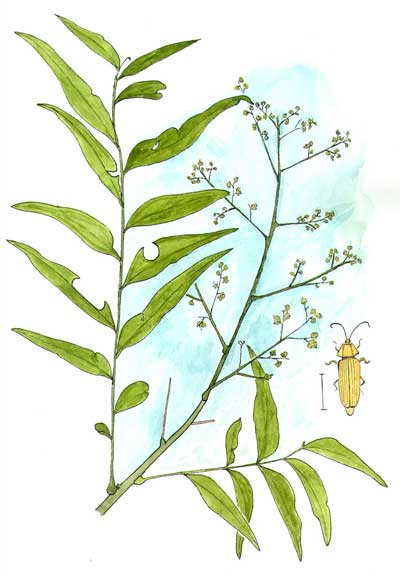Western Soapberry
Sapindus drummondii
(S. saponaria)

Watercolor from live specimen found in Pinal Co., Arizona. Net-winged Beetles (Lycidae), one illustrated at right, is one group of insects likely to be encountered on the flowers. In addition the leaf shows round and oblong segments cut out by leaf-cutter bees.
TREE : A small tree often growing in a copse of several plants together. Bark of young branches is
pale gray. Older bark is darker gray or brown and is fissured.
FRUIT: Unique fruit is a glassy, golden sphere with a very hard seed
inside. The fruits contain saponins, a detergent that has been used for
it's cleaning ability, but that is also toxic.
FLOWERS: Panicles of numerous, small, white flowers appear in May and
are highly attractive to insects of all kinds, especially bees.
UNARMED.
LEAVES: Pinnately compound leaves with an odd number of 7 to 17 leaflets.
The leaves are alternate on the stem (ash trees have similar leaves but are
opposite on the stem).
RANGE : This tree is sporadic on rocky desert foothills from about 1000
m and higher in elevation. Their presence suggests a reliable underground water
source. Found in southwestern Arizona and Sonora and thence eastward through
Texas and the southeast United States.